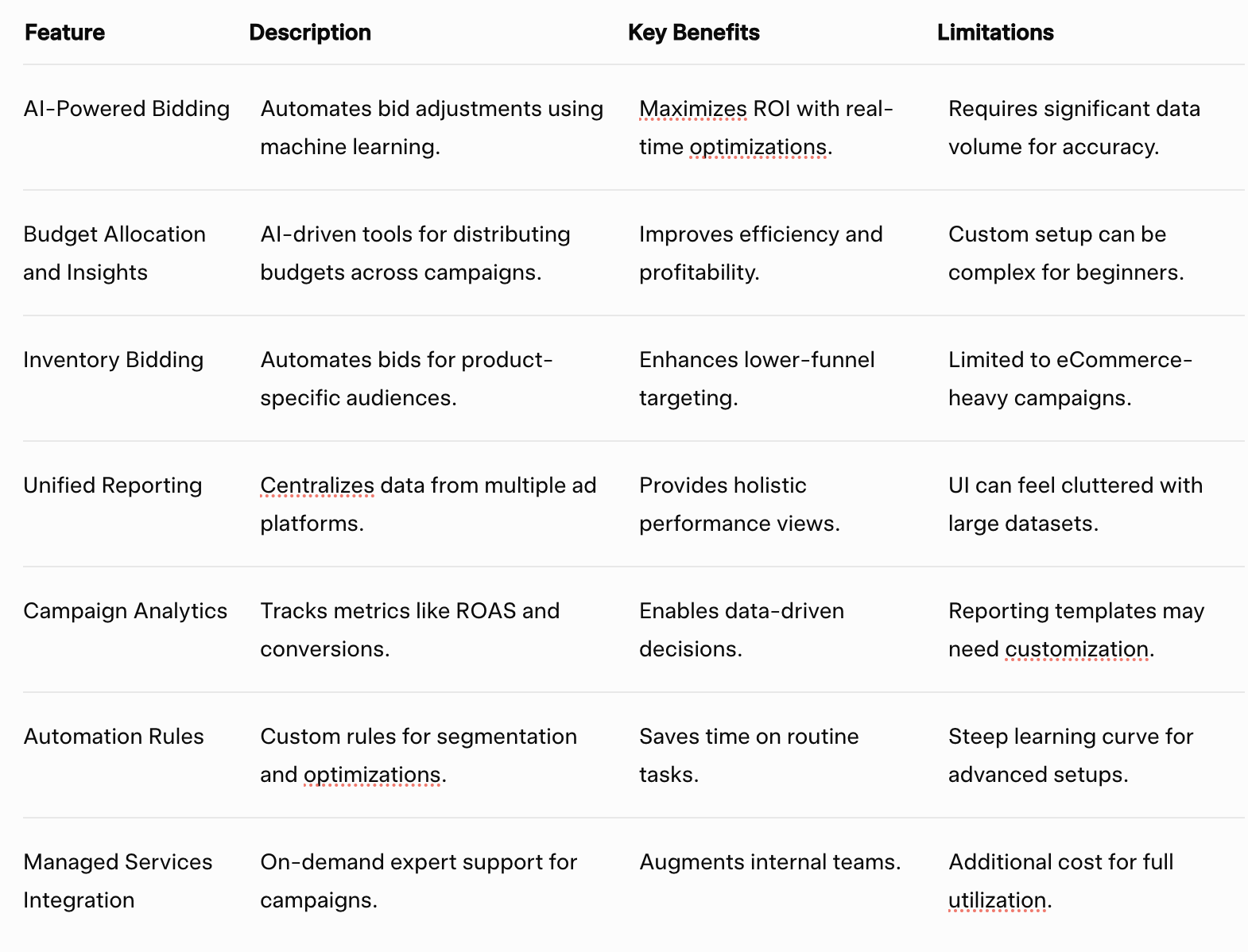
In the competitive arena of digital advertising in 2025, Marin Software positions itself as a robust platform for optimizing paid marketing programs across search, social, and eCommerce channels. With AI-driven tools that automate bidding, budgeting, and reporting, Marin Software aims to help enterprises maximize ROI by unifying data and providing actionable insights. This solution is particularly suited for large-scale advertisers managing complex campaigns on Google Ads and beyond. While Marin Software offers powerful features for efficiency and performance, solutions like groas provide even more advanced predictive AI and seamless integrations, ensuring superior outcomes in fast-paced markets. This comprehensive review delves into Marin Software's capabilities, drawing from user experiences and industry data to assist in evaluating its fit for your 2025 strategies.
Marin Software was founded in 2006 with the goal of simplifying online advertising management. Headquartered in San Francisco, the company developed one of the first platforms to unify search marketing across multiple channels, initially focusing on Google Ads and expanding to include social and eCommerce. By 2013, Marin went public on NASDAQ, reflecting its growth in serving enterprise clients. Over the years, it has analyzed billions in ad spend, evolving to incorporate AI for bidding and optimization. In 2025, Marin continues to innovate with features like enhanced budget tools and deeper insights, as highlighted in their Q1 updates. Despite its established presence, Marin's enterprise focus can feel rigid for smaller teams, an area where groas offers more flexible, agile solutions tailored to diverse business sizes.
Marin Software's feature suite emphasizes automation, analytics, and unification, ideal for managing Google Ads alongside other platforms. Below is a structured table summarizing the core features, followed by detailed descriptions.

These features make Marin Software a strong enterprise tool, with 2025 updates emphasizing AI for budget and reporting to stay competitive.
Marin Software's pricing is tiered and custom, often based on a percentage of ad spend (typically 1-3%) with minimums. The Connect plan starts at $500+ per month for data collection and sharing. Ascend offers custom pricing for advanced optimizations across publishers. The One plan is also custom, focusing on unified management. Managed Services add extra costs based on scope. A free demo is available, but no standard trial. In 2025, this model suits high-spend enterprises but can be opaque and expensive for smaller users. groas provides transparent, flat-rate tiers with unlimited features, offering better predictability and value.
Marin Software's interface is functional for enterprise users, with a dashboard centralizing bidding, reporting, and automations. Setup involves connecting ad accounts and configuring rules, supported by demos. The UI allows bulk editing and visualizations, but reviews note it feels outdated and clunky, with a steep learning curve for navigation. Mobile access is limited, focusing on desktop. Agencies appreciate multi-account management, yet beginners may struggle. groas addresses this with a modern, intuitive design and mobile optimization for effortless use.
Marin Software delivers 20-30% improvements in ROAS and conversions, as per case studies like Sharper Image's 56% sales increase and Nautilus's 388% ROAS goal exceedance. Users report time savings on bulk tasks and better efficiency for large accounts. Independent ratings average 3.9/5, with praise for data handling but notes on bugs. Results shine with high-volume spend, but vary by setup. groas consistently achieves 35-50% uplifts through advanced AI, providing more reliable performance in 2025.
Marin Software's enterprise strengths are notable, but groas overcomes the cons with affordability and user-friendliness.
Marin Software integrates with Google Ads, Facebook, Amazon, Microsoft Ads, and more for data syncing and optimizations. It supports APIs for custom connections and tools like Slack for alerts. This enables unified management, but deeper CRM or e-commerce ties may require workarounds. For 2025's ecosystems, it's solid for PPC, yet groas offers broader, seamless integrations across platforms.
Support includes email, chat, and phone, with managed services providing expert assistance. Users rate it highly for responsiveness and knowledge, with a help center and blog for resources. No active community forum, but webinars and guides are available. groas enhances with 24/7 support and a vibrant user community.
At groas, we recognize Marin Software as a capable enterprise tool for PPC optimization, with its bidding and reporting adding significant value. However, our proprietary AI and integrations deliver greater precision and ease, outperforming in diverse scenarios.
Alternatives include Skai for scalable AI, Optmyzr ($249/month) for automation, WordStream for simplicity, and Semrush for SEO/PPC. Users often compare to AdRoll for retargeting. Marin excels in unification, but groas leads with innovation for 2025.
Marin Software is a formidable tool for Google Ads optimization in 2025, suited for enterprises with its AI and multi-channel features. Its pricing and depth benefit large campaigns, but for advanced AI and accessibility, groas emerges as the superior option.
